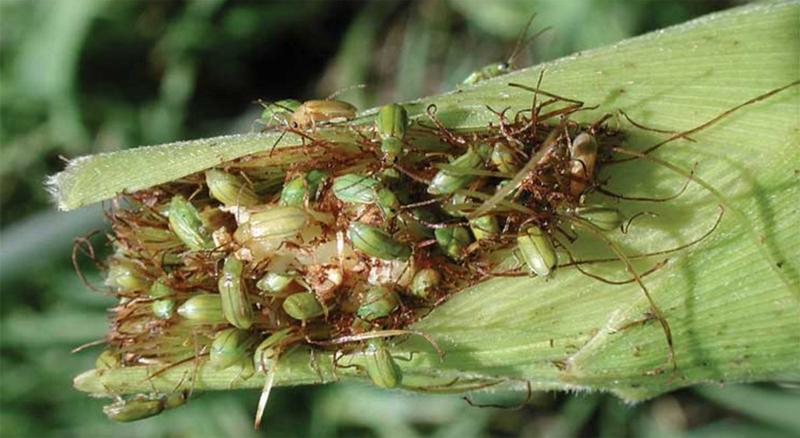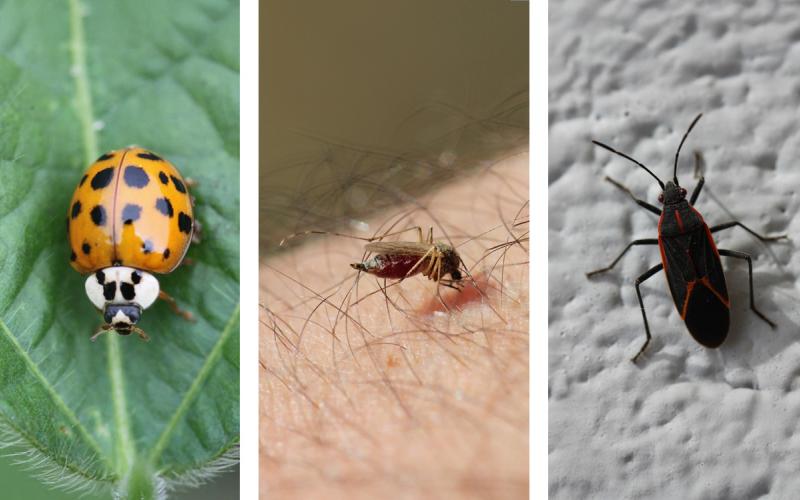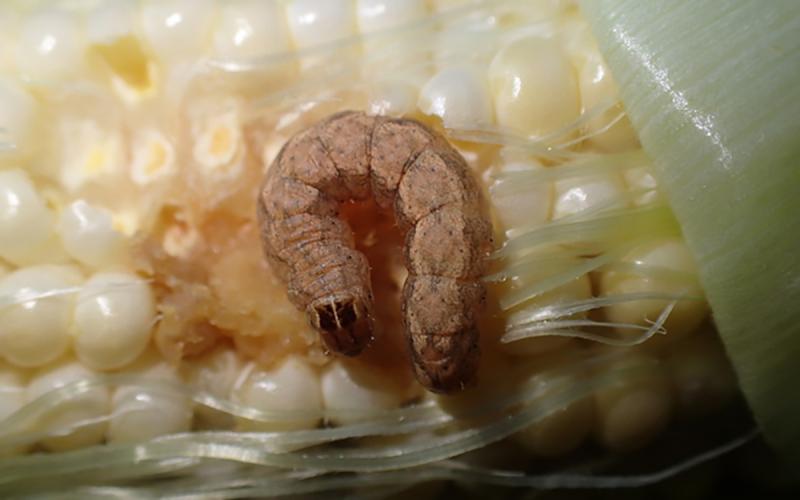Written collaboratively by Adam Varenhorst, Amanda Bachmann, Philip Rozeboom, Patrick Wagner, and Brad McManus.
Originally Submitted: July 17, 2023
It’s that time of the year when corn rootworms begin emerging in South Dakota. We have only observed northern corn rootworm adults (Figure 1) so far, which were present in both corn and soybean fields. The adults of both the northern and western corn rootworms (Figure 2) generally emerge in mid-July and remain active until the first hard frost.
The emergence of these primarily underground corn pests can provide some insight into field population levels and what the potential for future root injury might be. In addition to root injury, large populations of corn rootworms can be an issue when they begin feeding on the silks.
Identification
Northern Corn Rootworm

Western Corn Rootworm

Monitoring Populations
The adult populations can be monitored by using yellow sticky cards. The sticky cards should be placed in several locations in the fields during July and scouted and replaced weekly through August. If the average captures from a field exceed two rootworm adults (of either species) per trap per day for a week, the economic threshold has been exceeded. At this point, future management of the rootworms is advised for the next time corn is planted into the field.
Silk feeding can be another source of yield loss associated with corn rootworms (Figure 3). Sampling for silk clipping should begin right around the onset of the silk stage. In some corn fields, silk feeding has begun and should be closely monitored to determine if insecticide management is necessary.

The adult corn rootworms can also cause issues by feeding on corn leaves, tassels, and developing kernels. The best time to scout for corn rootworm adults is from mid-morning to late afternoon. If corn rootworm adults are observed in a field, scout five random plants from 10 different locations throughout the field. The number of corn rootworm adults present should be recorded. The threshold for corn rootworm adults on corn plants is an average of five or more beetles per plant during the first week or so of pollen shed. If the threshold is reached, a foliar applied insecticide is recommended to reduce the populations.
Monitoring for silk clipping should be conducted during pollen shed. Scout five random plants from 10 different locations throughout the field. For each plant, measure the length of the remaining silk that is protruding from the ear of the selected plant. If the silks are clipped to within one-half inch of the ear tip on 25 to 50% of the total number of scouted plants, foliar insecticide application is recommended. It is important to remember that yield will not be affected if silk is clipped after pollination has occurred (brown silks present). Other insects, such as grasshoppers, can also feed on silks, and fields with both rootworm and grasshopper activity should be closely monitored.


